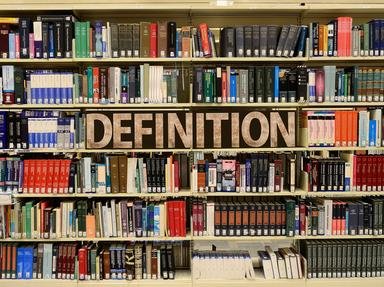
Zzyzx - Words With Unusual Starting Digraphs Quiz
Do not give up hope if you have two strange letters at the head of a crossword puzzle answer. Match words that start with these unusual pairs of letters with their definitions.
A matching quiz
by SixShutouts66.
Estimated time: 3 mins.